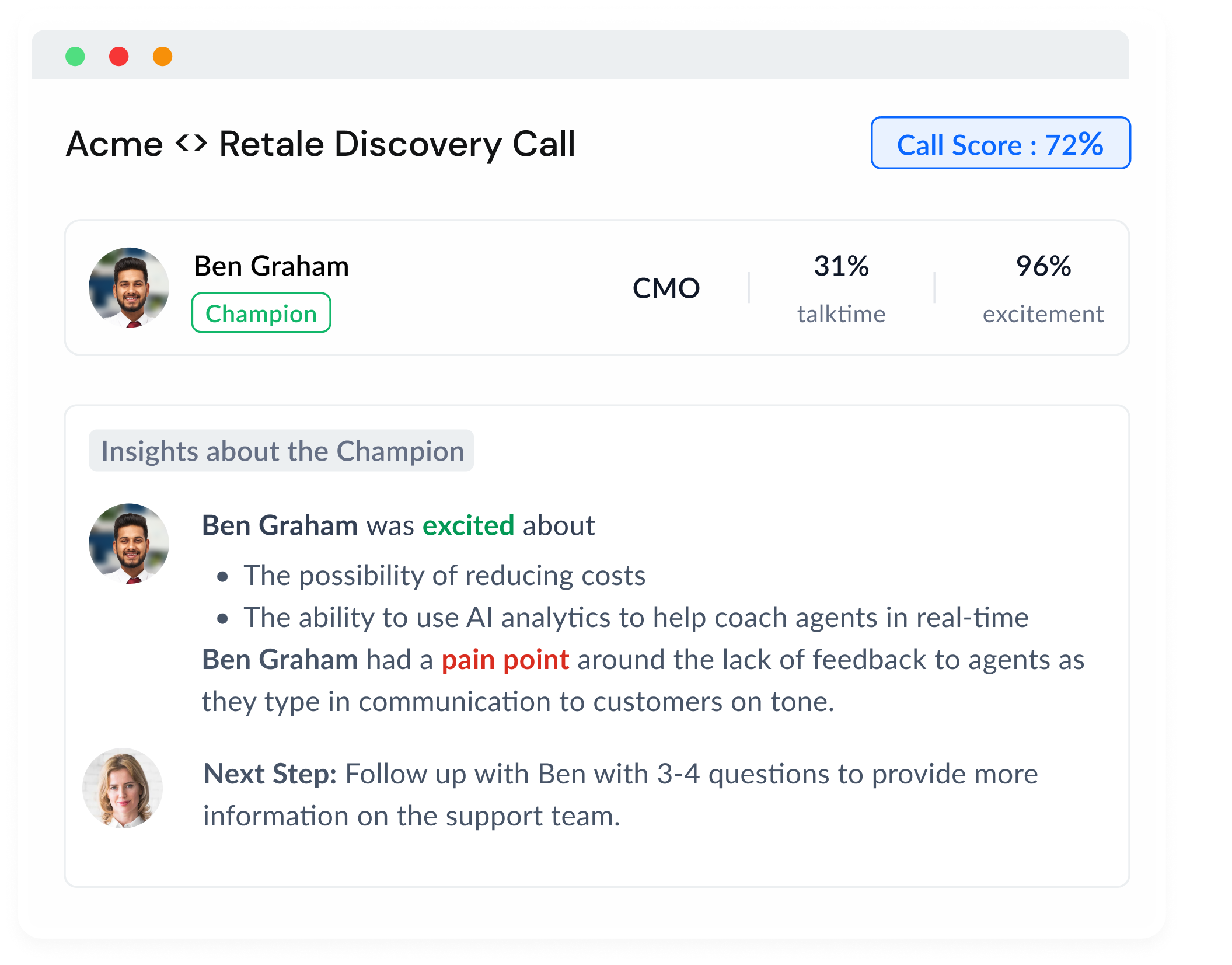So, you're diving into sales. I remember when I first started reaching out to prospects and there was all this buzz around cold calling. Some folks were saying, "It's old news, nobody picks up anymore." But then, I stumbled upon a few stats: 69% of buyers took cold calls last year and 82% of them even set up meetings after those calls.
Surprising, isn't it? It made me realize, it's not about whether cold calling is outdated, but more about how you're doing it. That’s what this guide is about - helping you nail that approach. Ready to chat about it? Let’s dive in.
Why Cold Calling is Important
In the fast-paced digital world we live in, you might wonder why anyone would still pick up the phone to reach out to a stranger. With all the advanced CRM tools, email campaigns, and social media outreach methods, is cold calling still relevant? Absolutely. Here's why:
Immediate Feedback: Unlike sending an email and waiting for a reply, cold calling gives you instant feedback. You can immediately gauge a potential client's interest, answer their questions, and address concerns.
Personal Touch: While technology is great, nothing beats human interaction. Hearing a real voice on the other end can build trust faster than any automated email.
Greater Control: With cold calls, you control the narrative. You decide the pacing, can adjust your pitch in real-time, and directly steer the conversation based on the responses.
Reach Decision-Makers: Often, emails get lost or are redirected to other team members. But with cold calling, you have a better shot at directly reaching decision-makers.
Cost-Effective: Think about it. No need for expensive ad campaigns or elaborate marketing tools. All you need is a phone, a list of leads, and a compelling script.
Crafting the Perfect Cold Call
Cold calling is a delicate balance of art and science. To strike that balance, understanding the core elements of a successful cold call is paramount. Here’s what separates a memorable cold call from one that's easily forgotten:
Thorough Research: Knowledge is Power
Every call should begin long before you pick up the phone. Arm yourself with knowledge about the prospect's business, industry trends, and even their competitors. This not only showcases your dedication but also allows you to tailor your conversation to their specific needs.
Tip: Use tools like Google Alerts or industry-specific newsletters to stay updated on the latest developments related to your prospects.
Clear Goals: Aim for Progress, Not Perfection
Setting realistic expectations for each call is vital. Not every interaction will lead to a closed deal, but every call can build a foundation. Define what success looks like for that particular call, whether it's gathering insights, scheduling a follow-up, or simply introducing your company.
Tip: Jot down 2-3 objectives you want to achieve by the end of the call. It helps in keeping the conversation on track.
Authentic Rapport: Humanize the Conversation
People buy from people, not companies. Making a genuine connection can differentiate your call from the dozens of others your prospect might receive. Whether it's congratulating them on a recent company milestone or empathizing with current industry challenges, show them you see beyond the sale.
Tip: A quick glance at their LinkedIn or company's social media can offer personal tidbits to weave into your conversation.
Value Proposition: Solve, Don't Sell
Your product or service should be a hero that swoops in to address a villainous problem. Avoid leading with features or price. Instead, spotlight how your offering can alleviate specific pain points they might be experiencing, using tangible benefits.
Tip: Craft a short yet compelling story about how another client in their industry benefitted from your offering. Stories resonate and are remembered.
Engagement: Make it a Dialogue
Conversations are a two-way street. While it's essential to convey your message, it's equally crucial to listen. Engage your prospects with thoughtful questions, and let them share their perspectives. This not only builds trust but also provides valuable insights into their needs.
Tip: Practicing active listening, where you fully concentrate, understand, and respond, can lead to more meaningful interactions.
Effective Close: Guide the Next Steps
As you wrap up, clarity is key. Summarize the conversation's highlights and establish clear next steps, ensuring both you and the prospect are on the same page. Whether that's sending more information, scheduling a detailed demo, or another call, always end with purpose.
Tip: An effective close often repeats a value proposition tied to the prospect's expressed needs, reinforcing the benefit of the next step.
Cold Call Script Templates
We've all been there: staring at the phone, knowing we need to make that call, but unsure of what to say. That's where these templates come in. We're aiming for a conversation, not a sales pitch. So, think of these templates as conversation starters – little nudges to get the ball rolling.
Initial Reach-out
Cold calls are essentially about making a solid first impression. Let’s make sure your introduction is memorable.
When to Use It: Use this script when you're reaching out to a potential lead or prospect for the first time. This is your chance to pique their interest and establish a foundation for future interactions.
Script Template
You: "Hi [Prospect's Name], it's [Your Name] from [Your Company]. We've helped businesses like yours with [Specific Benefit]. Have I caught you at a good time to chat for just a minute?"
If they're receptive:
You: "Awesome! I noticed [Something Specific about their business], and I believe our [Product/Service] can truly benefit you there. Can I quickly walk you through how?"
If they're busy:
You: "I totally get it. When would be a better time for a short call later this week? I think you'll find it valuable, and it'll only take a few minutes of your time."
If they're uninterested:
You: "No worries. Can I leave you with one thought about our [Product/Service]? If it resonates, perhaps we can talk more later. Does that sound alright?"
Why This Works: Being direct and concise grabs their attention, and pinpointing how you can be of help showcases your awareness of their needs. Giving them options respects their time and maintains the door for future discussions.
Setting Up an Appointment
Making that initial connection is great, but now you need to cement it. Setting up a concrete time to discuss further is the key.
When to Use It: After establishing an initial interest in the previous conversation, this script will help you lock down a specific time to discuss in detail, ensuring the prospect is truly invested.
Script Template
You: "Hi [Prospect's Name], it’s [Your Name] again from [Your Company]. I’m glad we had that chat the other day. How about we set up a more detailed discussion about how we can benefit your operations? Does this Thursday at 10 AM work for you?"
If they agree:
You: "Fantastic! I've penciled us in for Thursday at 10 AM. I'll make sure to send a calendar invite and the details of what we'll discuss. Looking forward to it!"
If they suggest another time:
You: "That works for me as well. Let’s lock in [Their Suggested Time]. I'll send over a calendar invite. Thanks for making the time!"
If they're hesitant:
You: "I understand. How about we touch base next week? I really believe our discussion could be valuable for you."
Why This Works: By providing a specific time suggestion rather than leaving it open-ended, you create a sense of urgency. Being flexible with their schedule and ensuring a structured follow-up keeps things professional.
Handling Objections
Every seasoned salesperson knows that objections are a natural part of the sales process. However, how you handle these objections can make or break the deal. Being prepared with a structured response can be your ace in the hole.
When to Use It: Whenever a prospect raises concerns or seems hesitant about your product or service.
Script Template
You: "Hi [Prospect's Name], this is [Your Name] from [Your Company]. We provide [specific product/service]. I think it could be a great fit for [Prospect's Company]. Would you have a moment to discuss?"
Prospect: "I've heard of services like yours, but I'm not sure it's what we need right now."
You: "I appreciate your honesty, [Prospect's Name]. May I ask what reservations you have or what you're currently using that meets this need?"
Prospect: "We're currently using [Competitor's Product]."
You: "Got it. Many of our current clients were once in the same position. What they found beneficial with us was [specific feature or benefit that distinguishes your product from the competitor's]. Would you be open to exploring how this could specifically benefit [Prospect's Company]?"
Prospect: "Hmm, okay. I can spare a few minutes to hear more about it."
You: "Thank you for being open-minded.” [Proceed to discuss the benefits and address any further concerns].
Why This Works: This script is focused on addressing objections directly, but in a way that feels collaborative rather than combative. By asking for feedback and positioning your product's unique benefits, you engage in a meaningful dialogue with the prospect.
Following Up After No Response
Sometimes, even after a positive conversation, prospects don't take the next step. Maybe they got busy, maybe they're weighing their options, or maybe your offer simply slipped their mind. In such cases, a gentle nudge is sometimes required to bring your proposal back to their attention.
When to Use It: You've initiated contact and sent over relevant information or set up a proposed meeting time but haven't heard back from the prospect after a significant period (usually a week or more).
Script Template
You: "Hi [Prospect's Name], this is [Your Name] from [Your Company] again. I hope this message finds you well. I reached out last week regarding [specific product/service details] and just wanted to follow up. I understand everyone's schedule can get hectic. Is there a better time for us to discuss or any other information you'd like in the meantime?"
Prospect: "Oh, I'm sorry, I meant to get back to you but got caught up with some urgent matters."
You: "No worries at all, [Prospect's Name]. I appreciate your honesty. Can we possibly look at setting up a time next week that works for you? Or if you prefer, I can send over some more details for you to look over when you get a chance."
Prospect: "Let's do next week. How about Tuesday?"
You: "Tuesday works great for me. I'll send over a calendar invite. Thanks for taking the time, and I look forward to our conversation."
Why This Works: By approaching the situation with understanding and not pressuring the prospect, you show empathy. Offering alternative ways to engage (either another call or sending more info) caters to their preferred method of communication.
Post-Conversion Sales Script
Once a prospect becomes a customer, it's crucial to continue building the relationship, ensuring they extract maximum value from your product, and laying the foundation for potential upsells or referrals.
When to Use It: After your prospect has made the purchase. It ensures that they're onboarded correctly, feel supported in their decision, and are aware of other offerings that could benefit them.
Script Template
You: "Hello, [Customer's Name]. First off, I want to sincerely thank you for choosing [Your Product/Service]. How's everything going so far?"
Customer: "Everything's been great so far! I'm just getting acquainted with all the features."
You: "That's wonderful to hear! Remember, if you have any questions or need assistance, we're here to help. Also, I wanted to check in and see if you'd be interested in a short onboarding session? It could provide some valuable tips and tricks to get the most out of our solution."
Customer: "That sounds helpful. Let's schedule that."
You: "Perfect. Lastly, many of our clients also find value in [related product/service]. It complements what you have and can enhance [specific benefit]. Would you be open to exploring this down the line?"
Customer: "I'll think about it. Thanks for letting me know."
Why This Works: Reaching out post-purchase reassures the customer, adds value to their experience, allows you to get their feedback, and subtly sets the stage for future sales.
Referral Sales Script
Getting your customers to refer you to their peers is one of the most effective ways to grow your business. When your existing clients are happy and satisfied with your service or product, they can be your most compelling advocates.
When to Use It: After your client has experienced the value of your product or service and has expressed satisfaction.
Script Template
You: “Hi [Client's Name]. First off, I want to genuinely thank you for choosing [Your Company's Name]. It's been a pleasure working with you and seeing how [Your Product/Service] has benefited you in [specific way they've benefited].
I'm reaching out today because we're looking to help others just like you. Do you know anyone who might also benefit from our offerings? Referrals from valued clients like you truly mean a lot to us.
Thank you for considering, and I'm here if you have any questions or need further assistance.”
If they're hesitant or unsure:
You: “That's absolutely fine, [Client's Name]. If you ever come across someone in the future, just keep us in mind. Thank you for your time and continued support.”
If they provide a referral:
You: “Thank you so much, [Client's Name]! I truly appreciate it. I'll reach out to them with the same level of dedication and service we've provided you. Thanks for being a part of our journey.”
Why It Works: A referral request rooted in genuine appreciation and a demonstrated value elicits positive responses. Plus, it's non-pushy, emphasizing the client's experience, which they can vouch for when recommending you to others.
10 Cold Calling Tips and Practical Examples
As we draw closer to the end of this guide, it's crucial to cement your understanding of cold calling with some actionable strategies. To ensure you're well-equipped in every conversation, here are ten cold calling tips, complete with practical examples to demonstrate each strategy in action.
1. Tap into Current Events or Industry News: Utilize recent news related to their industry to kickstart the conversation and demonstrate your awareness.
Example: "I saw in yesterday's news that companies in your sector are gearing towards sustainable practices. Our solution is designed to support just that."
2. Acknowledge Their Time Constraints: Always acknowledge that you might be calling unannounced and give them an easy out.
Example: "I know I'm calling out of the blue, and I'll be quick. If now's not a good time, when can we chat?"
3. Use Open-ended Questions: Instead of making it a monologue, engage them with questions that can't be answered with just 'yes' or 'no'.
Example: "What challenges are you currently facing in streamlining your operations?"
4. Mirror Their Language and Tone: If they're formal, stay formal. If they're more casual, ease up a bit to build rapport.
Example: Prospect: "We've been having a heck of a time with our current software."
You: "Sounds frustrating! Let's see how we can make things smoother for you."
5. Address Objections with Anecdotes: Share relatable stories to counteract objections.
Example: Prospect: "I'm not sure your tool can handle our volume."
You: "I completely get that. In fact, Company X had the same concern. Since using our tool, they've seen..."
6. Be Transparent about Pricing: If asked, give a price range, followed by the value your product offers.
Example: Prospect: "How much does it cost?"
You: "Our packages start from $X, but here's the value you'll get..."
7. Leverage Social Proof Early: Mentioning reputable clients can build trust.
Example: "Companies like X and Y, which are leaders in your industry, have benefited from our solutions. I believe you can too."
8. Offer a No-Strings-Attached Value: At times, giving prospects a taste of your product/service without immediate expectations can pique interest.
Example: "I genuinely believe our solution can make a difference for you. How about we give you a one-month trial, no obligations?"
9. Practice Active Listening: Always ensure you're genuinely paying attention to what the prospect is saying. This not only demonstrates respect but also provides insights into their pain points.
Example: Prospect: "Our team struggles mainly during the end-of-month reporting."
You: "So, the end-of-month reporting is a significant challenge. Can you tell me more about the issues you face during that period?"
10. Anticipate and Prep for Common Concerns: Before the call, predict potential reservations or concerns your prospect might have and prepare concise responses.
Example: Prospect: "How does your product integrate with our existing systems?"
You: "Great question. Our product is designed to seamlessly integrate with a variety of systems including A, B, and C. If you're using a different system, our tech team can work closely with yours to ensure a smooth integration."
Closing Thoughts
The art of cold calling, while often challenging, has a certain beauty to it. Mastering this art requires patience, skill, and the right resources. As you venture further into the world of sales, remember to keep the conversation real, authentic, and informed.
On that note, if you're seeking a tool to sharpen your edge, consider Sybill - the most accurate call summarizer and AI assistant in the market. It's designed to understand, analyze, and enhance every interaction, bridging the gap between human intuition and AI-powered insights.
With the right approach and tools like Sybill by your side, you can easily elevate your game. Remember, it's all about blending old-school charm with new-age tech.















.png)





